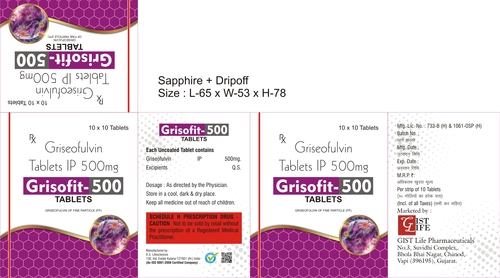
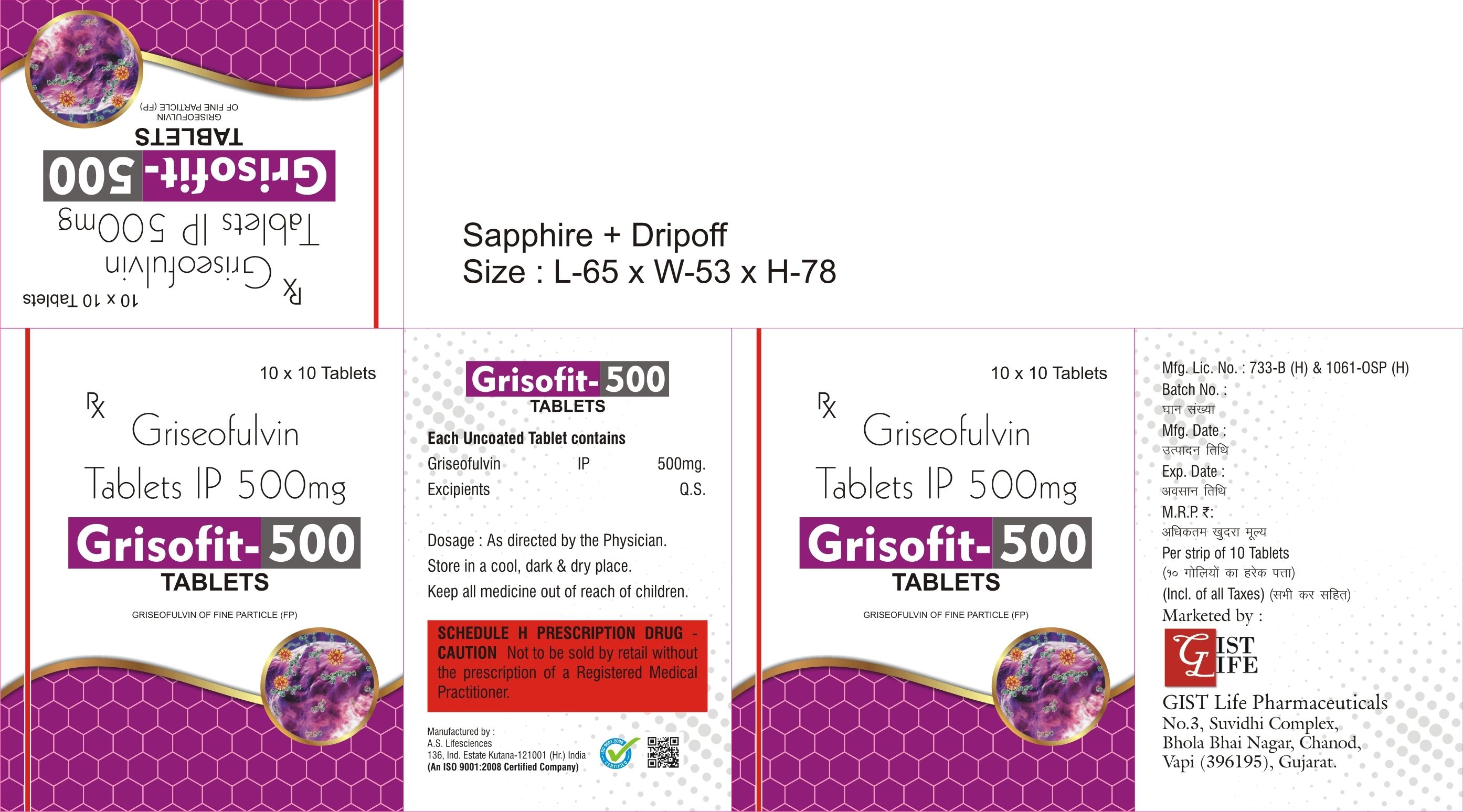
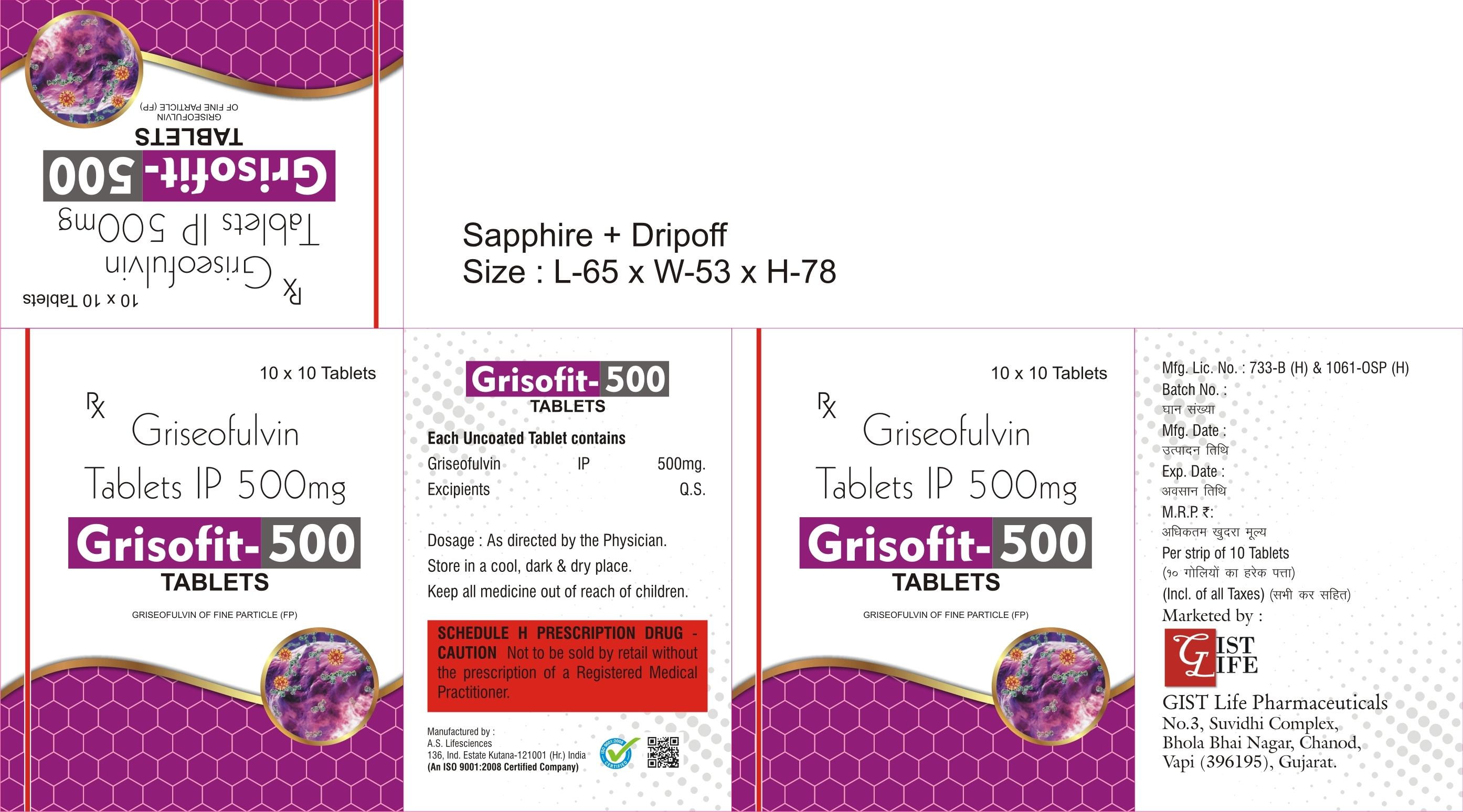
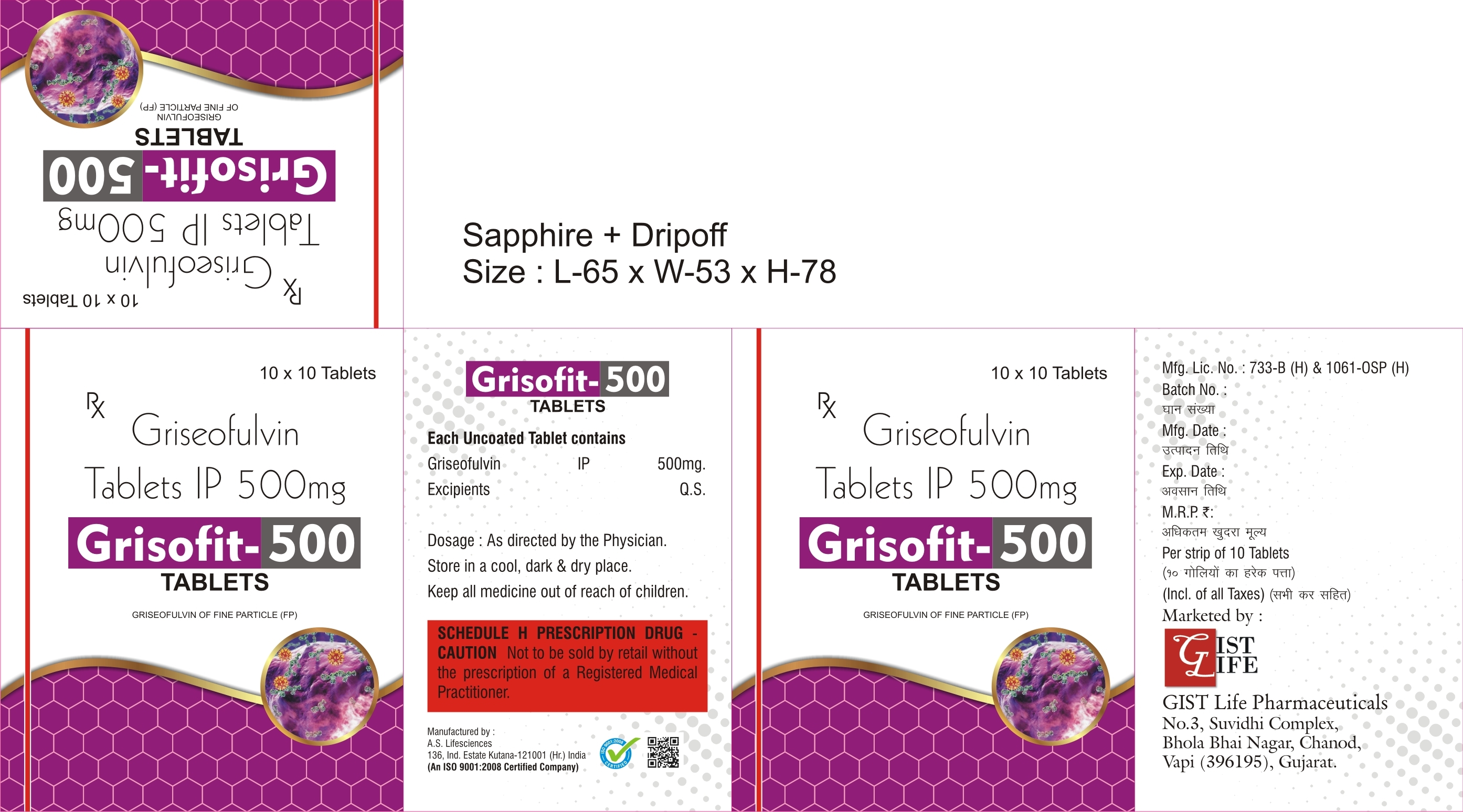
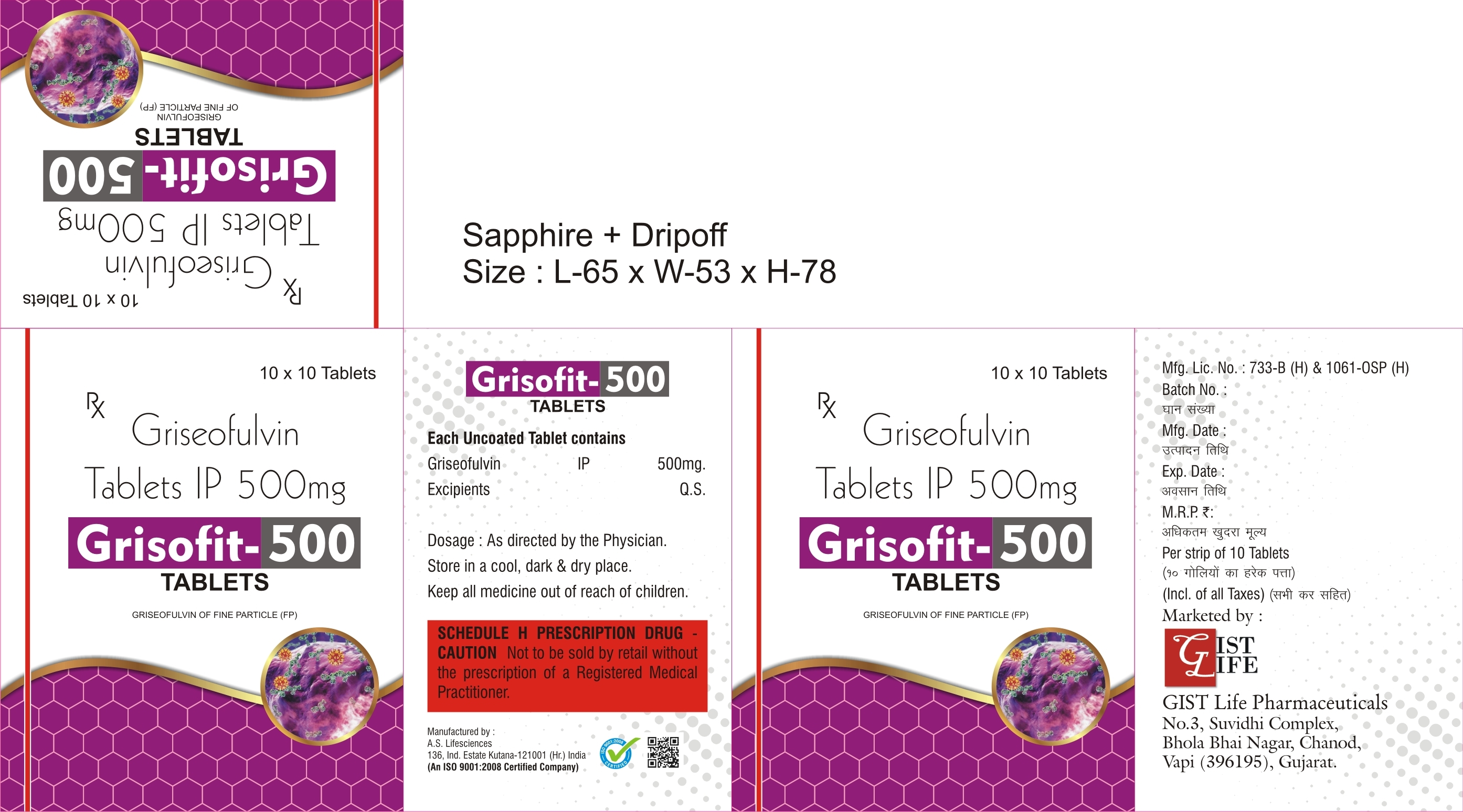
GRISEOFULVIN 500 MICRONIZED SCORED TABLETS
Product Details:
- Grade Pharmaceuticals Grade
- Purity 98%
- Formulations Type General Drugs
- Formulations Form Tablets
- Gender/Age Group Adult
- Storage Instructions Dry Place
- Click to view more
GRISEOFULVIN 500 MICRONIZED SCORED TABLETS Price And Quantity
- 10 Box
- 410 INR/Box
GRISEOFULVIN 500 MICRONIZED SCORED TABLETS Product Specifications
- Adult
- Pharmaceuticals Grade
- 98%
- Dry Place
- General Drugs
- Tablets
GRISEOFULVIN 500 MICRONIZED SCORED TABLETS Trade Information
- Cash in Advance (CID) Cash Advance (CA)
- 300 Box Per Month
- 1 Months
- Yes
- Sample costs shipping and taxes has to be paid by the buyer
- Australia South America Western Europe Middle East Asia Central America Eastern Europe North America Africa
- All India
Product Description
isan antifungal medication used to treat a number oftypes of dermatophytoses (ringworm). Thisincludes fungal infections of the nails and skinwhen antifungal creams have not worked. It is taken by mouth.
Common side effects include allergicreactions, nausea, diarrhea, headache,trouble sleeping, and feeling tired. It is not recommended in peoplewith liverfailure or porphyria. Useduring or in the months before pregnancy mayresult in harm to the baby. Griseofulvin works by interfering withfungal mitosis.
Griseofulvin was discovered in 1939 from a type of Penicillium mold. Itis on the World Health Organization'sList of Essential Medicines, the most effective and safe medicinesneeded in a healthsystem.
Medical uses
Griseofulvin is used orally only for dermatophytosis. Itis ineffective topically. It is reserved for cases with nail, hair, or largebody surface involvement.
Mechanism
The drug binds to tubulin, interferingwith microtubule function,thus inhibiting mitosis.It binds to keratin inkeratin precursor cells and makes them resistant to fungal infections. The drugreaches its site of action only when hair or skin is replaced by thekeratin-griseofulvin complex. Griseofulvin then enters the dermatophyte throughenergy-dependent transport processes and bind to fungal microtubules. Thisalters the processing for mitosis and also underlying information fordeposition of fungal cell walls.
Biosynthetic process
It is produced industriallyby fermenting the fungus Penicillium griseofulvum.
The first step in the biosynthesis of griseofulvin by P.griseofulvin is the synthesis of the 14-carbon poly-β-keto chain by atype I iterative polyketide synthase (PKS) via iterative addition of 6malonyl-CoA to an acyl-CoA starter unit. The 14-carbon poly-β-keto chainundergoes cyclization/aromatization, using cyclase/aromatase, respectively,through a Claisen and aldolcondensation to form the benzophenone intermediate.The benzophenone intermediate is then methylated via S-adenosylmethionine (SAM) twice to yield griseophenone C. Thegriseophenone C is then halogenated at the activated site ortho to the phenolgroup on theleft aromatic ring to form griseophenone B. The halogenated species thenundergoes a single phenolic oxidation in both rings forming the two oxygendiradical species. The right oxygen radical shifts alpha to the carbonyl viaresonance allowing for a stereospecific radical coupling by the oxygen radicalon the left ring forming a tetrahydrofuranone species.[ The newly formed grisan skeleton with aspiro center is then O-methylated by SAM to generatedehydrogriseofulvin. Ultimately, a stereoselective reduction of the olefin ondehydrogriseofulvin by NADPH affords griseofulvin.

Price:
- 50
- 100
- 200
- 250
- 500
- 1000+







